Working with dip pens and Gillott nib
At the moment I’m enjoying the summer weather, chasing insects around the garden and getting used to a new camera. I have been really pleased to find miner bees digging in my garden for the first time this year. I don’t know whether I’ve missed them before, or they’re here for the first time. I’m concentrating on drawing the bees using dip pens fitted with a Gillot nib, and thought I’d share some of the images I’ve been working on. These are of all sorts of bees including leafcutters and honey bees. I’ve been working on a combination of sketching them live in the garden so I can capture their movements, and also studying them in detail from photographs.
Above, left and right: details from some wing studies, in pen and ink. Above, centre: three views of a leafcutter bee, newly-hatched.
Drawing bees on a thyme plant, in pen and ink
Above left: I sat for a while in the sunshine watching three or four honey bees working on a thyme plant just outside my studio. This time I tried to capture the positions and activities of the bees, and left the plant as a few lines which indicate the position of the main stems. Not surprisingly, I found drawing these bees very difficult – they are so small and move quickly, and there is hardly time to capture more than the position of the wings or a leg. However, after a short while the patterns the bees make in their explorations become clear. I intend to repeat this experiment again soon as I feel I was just getting somewhere when the paper became too crowded with bees to continue. Above right: detail of one of the bees from this drawing.
Pen and ink sketches of honey bees
Above: I have been taking many pictures of bees this summer, and these help me to understand the way these insects are put together. So I took plenty of photographs of the bees on the thyme which featured in the drawing above. Here I am working from the computer screen, in order to learn more about their anatomy. A combination of observation, drawing the bees with pen and ink ‘live’, and working from photographs in this way is helping me to get a good result with the drawings. As you can see I am using very little wash on these bees, and concentrating on the lines. In the central image you can see the Gillott nib I’m using for these drawings.
Dip pen, and Indian ink
Above: Views of my dip pen, and the Indian ink I’m using, with a close-up of my now rather worn Gillott nib.
You can read an interview with me in Bee Mentor which looks at my interest in leafcutter bees, but also covers my drawing techniques and practice, and my photography.
| Home | About | Contact | Galleries | Subscribe to Blog |
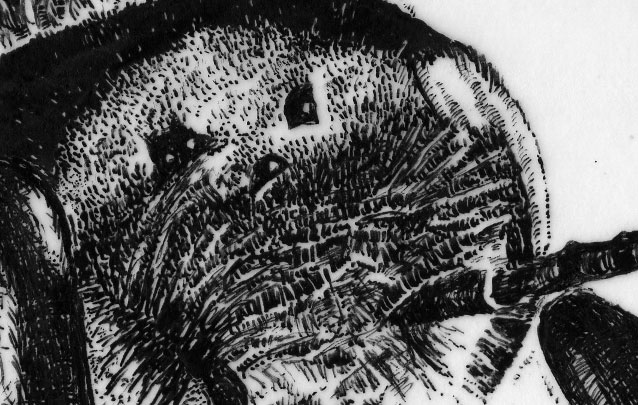
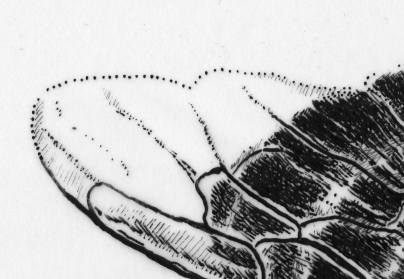
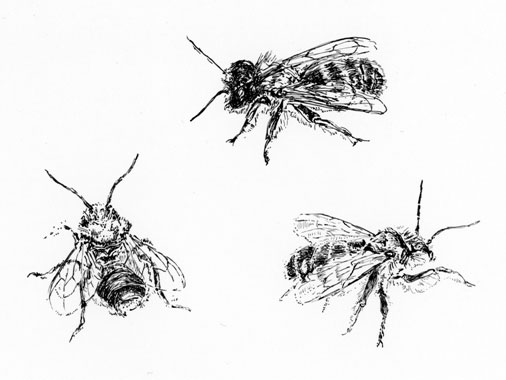
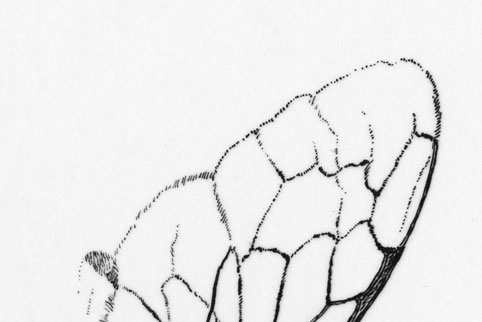
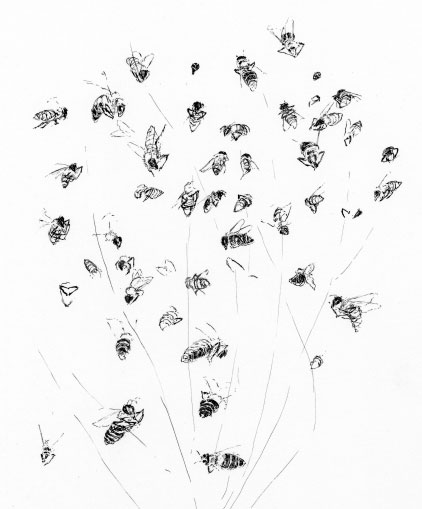
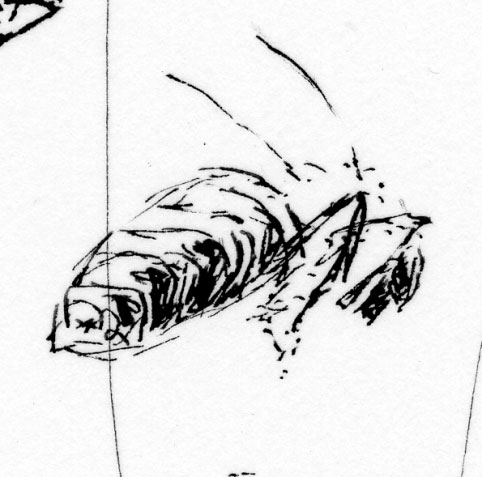
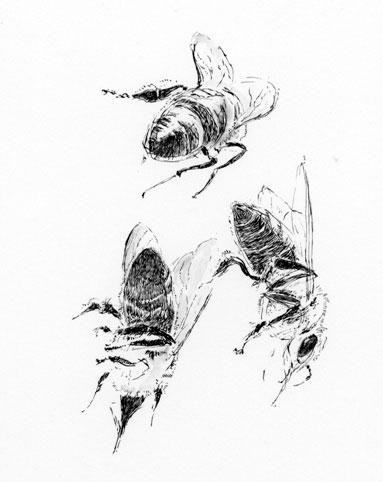
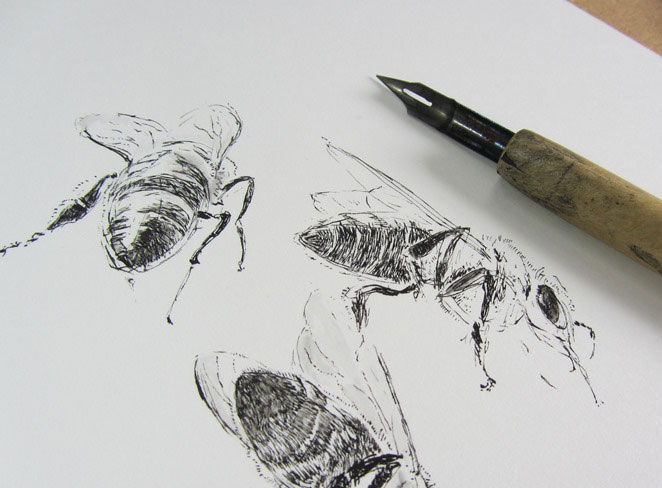
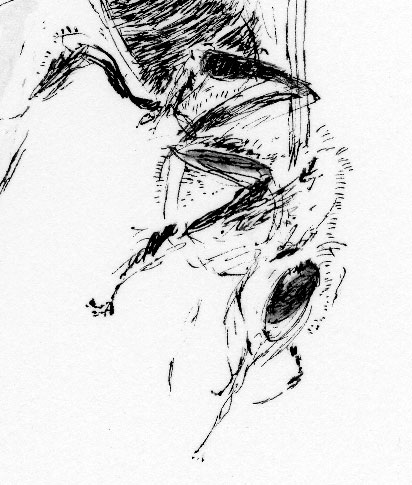
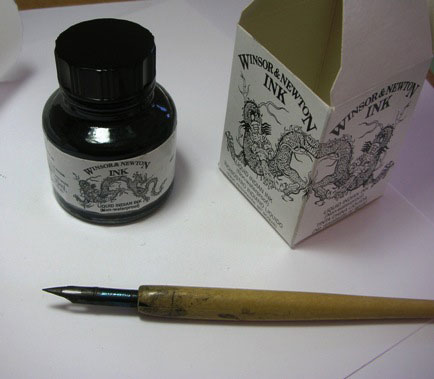
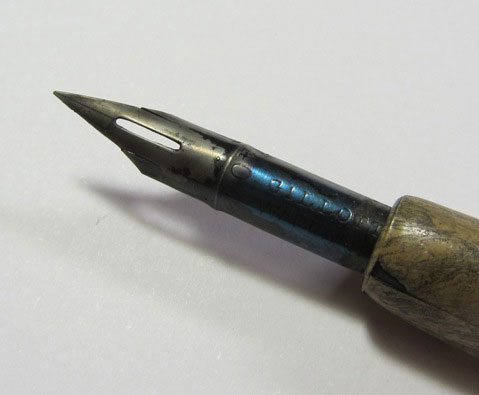
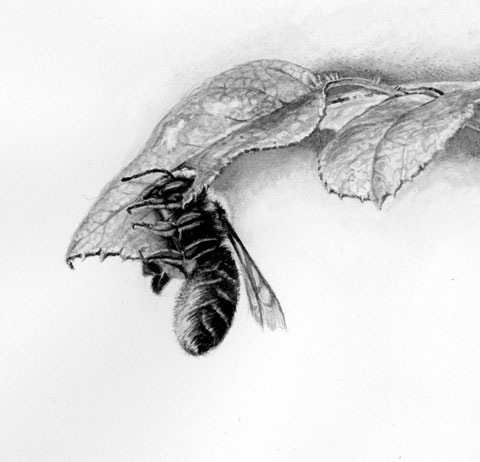
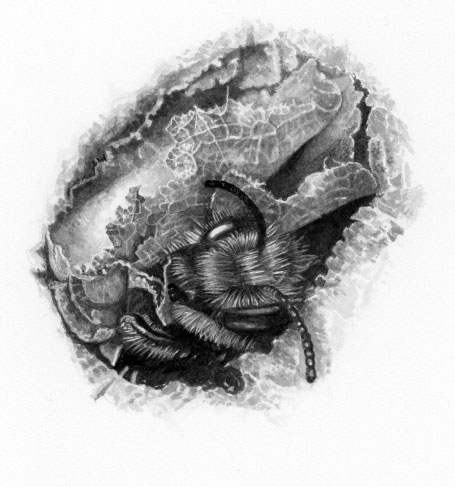
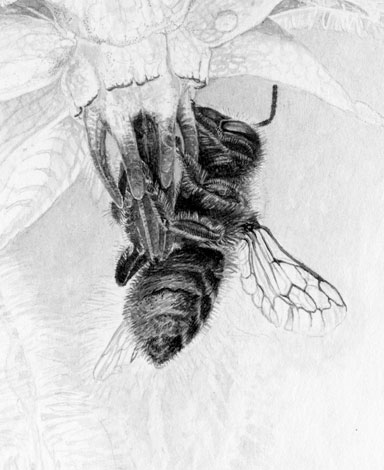
Chris,
I love what you’re doing here, you are one of the most creative people I know.
Hugs,
Tara
Very nice. No doubt the following drawings were made using a nib pen: http://www.flickr.com/photos/norwegica/5408503254/
Thank you – yes, those are beautiful drawings on your flickr, aren’t they?
Thanks, Tara! Glad to know that people like these bees.
Your drawings are a study of observation and meditative concentration. What a fantastic skill to have developed. You have conquered the micro skills, how do you breath out again, back into day to day activity, after such fine work? or does it just come naturally?
Oh, Brian, what an interesting question, and something I’d never considered before now. I think it’s something like waking up from a dream, and realising once again that there’s this thing called reality going on as ‘normal’ all around! Do you draw?